I'm currently pondering how best to take an AST generated using Antlr and convert it into useful objects which I can use in my program.
The purpose of my grammar (apart from learning) is to create an executable (runtime interpretted) language.
For example, how would I take an attribute sub-tree and have a specific Attribute class instanciated. E.g.
The following code in my language:
Print(message:"Hello stackoverflow")
would product the following AST:
My current line of thinking is that a factory class could read the tree, pull out the name (message), and type(STRING) value("Hello stackoverflow"). Now, knowing the type I could instanciate the correct class (e.g. A StringAttribute class) and pass in the required attribute data - the name and value.
The same approach could be used for a definition factory, pulling out the definition name (Print), instanciating the Print class, and then passing in the attributes generated from the attribute factory.
Things do get a bit more complicated with a more complicated program:
Program(args:[1,2,3,4,5])
{
If(isTrue:IsInArray(array:{Program.args} value:5))
{
Then {
Print(message:"5 is in the array")
} Else {
Print(message:"More complex " + "message")
}
}
}
ANY/ALL help or thoughts are very welcome. Many thanks.
Previous related questions by me (Could be useful):

